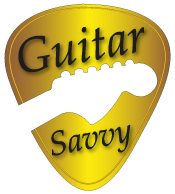The following guitar tab example shows the D chord, the first bar is the chord played normally and the second bar shows the chord in arpeggio form:

- The D chord played normally (first bar) and arpeggiated (2nd bar)
Note that the letters above the tab refer to the right hand finger labeling (PIMAC) scheme. If you’re not sure what this means visit the guitar hand positions page. Fingerstyle guitar is usually played with the thumb (p) covering the three bass strings (4th, 5th and 6th strings) while the index finger (i) covers the 3rd string, the middle finger (m) covers the 2nd string and the third finger (a) covers the first string. You might find it tricky or uncomfortable to have your individual fingers play different strings like this at first but if you persist, you will get used to it. This is particularly important for those who wish to learn to play classical guitar.
Alternatively if you use a guitar plectrum (guitar pick) you might take a while to develop sufficient picking speed and accuracy when playing arpeggio chords. Alternate picking (playing alternating down and upstrokes with your guitar pick) can help here as can hybrid picking where the plectrum is held between the thumb and index finger of the picking hand, covering the three bass strings (4th-6th) and the rest of the fingers can cover the treble strings (1st-3rd). Again, you should experiment with this and find out what works best for your style of guitar playing.
Click this link for more advice on guitar picking styles.

One comment
Comments are closed.